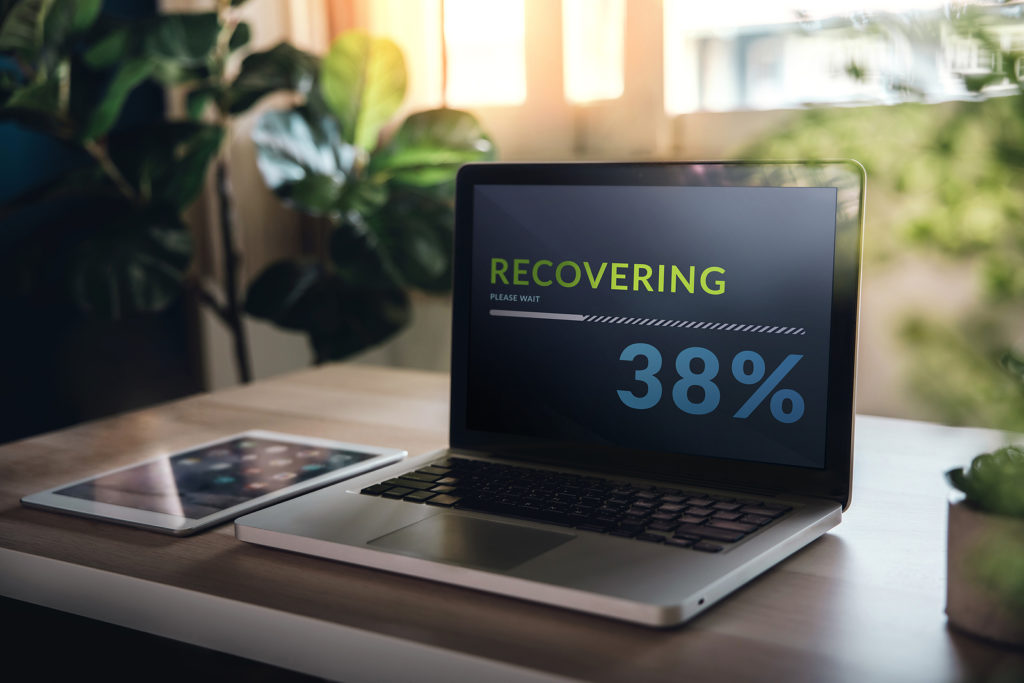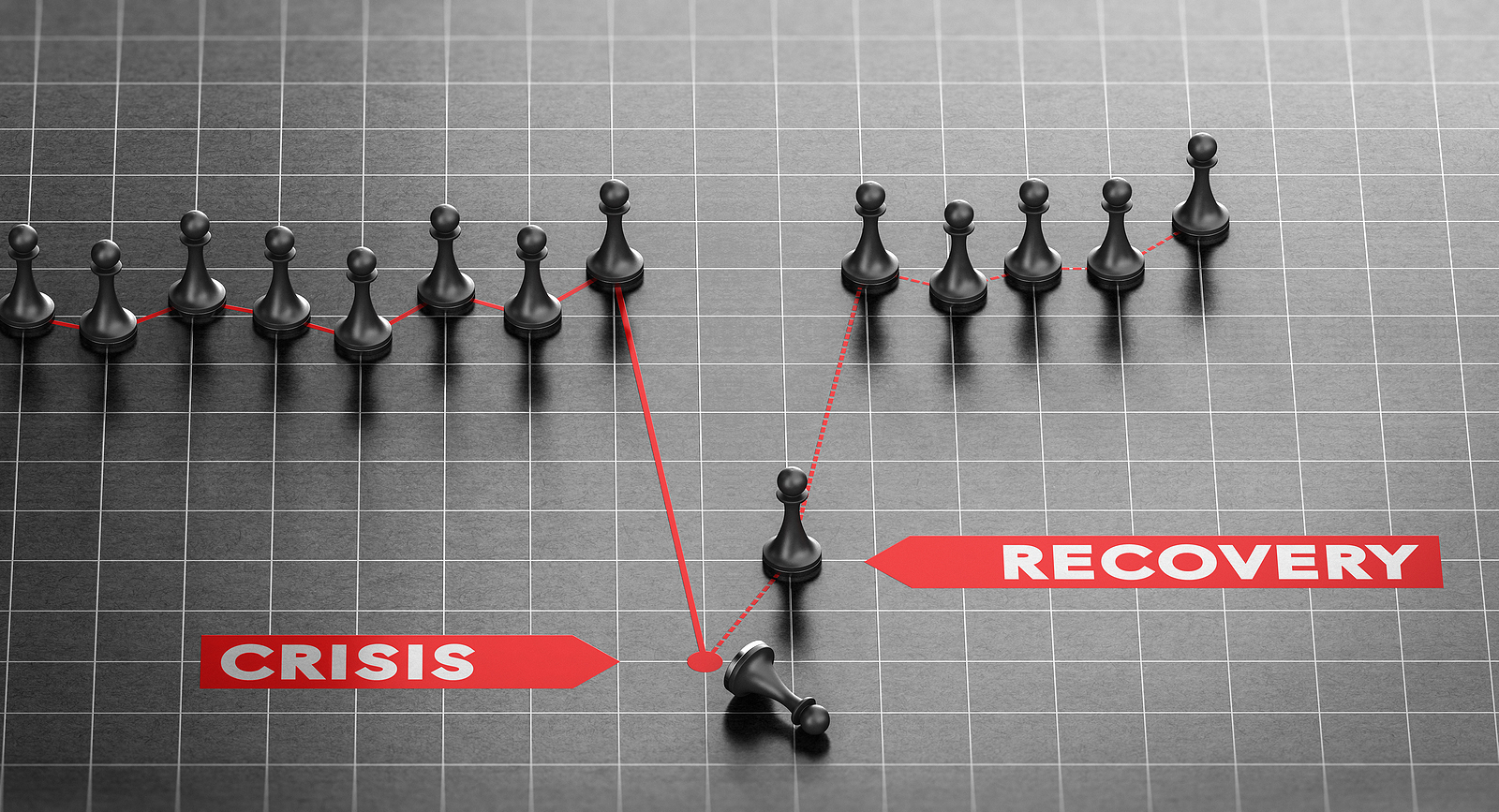What is Disaster Recovery?
Disaster Recovery, or DR, is a company’s approach to recovering from a major event that permeates the defense of the businesses systems and IT infrastructure. To prepare for disaster, businesses often create documentation of a process to follow under these circumstances. This process is known as a Disaster Recovery Plan. The goal of a good DR plan is to regain full functionality as soon as possible after a disaster.
The Importance of Disaster Recovery
Not only can a disaster lead to sensitive data loss, but it can lead to extreme financial loss as well. Research has shown businesses that lose access to valuable data for more than a week due to a disaster end up bankrupt within a year.
An effective DR plan should be implemented to minimize risks and resume operations as quickly as possible, all while maintaining industry compliance.
Potential Disasters to Mitigate
Most disasters that require a DR plan are natural occurrences, but they can be a result of technical failures or intentional IT attacks. Regardless, the events preceding any implementation of a DR plan are typically critical in nature and put a damper or complete stop on business operations long enough to require intervention.
Disaster examples include:
- Tornadoes
- Hurricanes
- Earthquakes
- Fires
- Floods
- Industrial accidents
- Power outages
- Equipment failure
- Cyber security attacks
- Human Attacks or threats
- Epidemics or pandemics
Important Assessments for Disaster Recovery
Before determining a DR strategy, a business must first perform a thorough assessment of its existing assets and priorities. This type of analysis should include:
- Risk analysis
- This type of assessment is meant to identify potential hazards and their potential impact on the organization, so procedures can be implemented that mitigate these risks.
- Business impact analysis
- Business impact analysis (BIA) examines the impact of different disruptions to an organization’s finances, marketing, reputation, legal compliance, safety, and quality assurance.
Disaster Recovery Objectives
To maximize data protection and determine the need for backup, organizations should also use measurements called recovery point objective (RPO) and recovery time objective (RTO). Both are important elements in DR but have different uses.
- Recovery point objective
- RPO is the frequency in which files will be backed up and recovered so business operations can proceed after an event. For example, if the RPO is set for 6 hours, then files will be backed up every 6 hours. RPOs are acted on before a negative event takes place to ensure data will be secured.
- Recovery time objective
- RTO is the amount of time a business estimates it can be disabled without long term or significant damage to the business or infrastructure. In some instances, several days can pass without major consequences, whereas for other organizations, mere seconds can cause lasting damage.
Types of Disaster Recovery
Once an event occurs that impacts business operations, the business must be ready to rebound quickly and smoothly. There are different types of Disaster Recovery that can take place to ensure this, such as:
- Data center disaster recovery
- Organizations that have internal data centers must have a DR plan that considers the internal IT infrastructure as well as the physical facility.
- Network disaster recovery
- A network DR plan must provide a plan for restoring access to data and backup sites.
- Virtualized disaster recovery
- Virtualization DR allows organizations to replicate workloads in an alternative virtualized location.
- Cloud disaster recovery
- Cloud DR goes beyond simple backup by allowing organizations that traditionally used an alternate location for DR to be hosted in the cloud.
- Disaster recovery as a service (DRaaS)
- DRaaS is the commercial version of cloud DR and assumes responsibility for implementing the DR plan when a crisis arises. DRaaS provides 3rd party replication and hosting of an organization’s virtual and physical servers.
What to Include in A DR Plan?
DR is a reactive process that must be planned. The DR plan should detail recovery goals as well as steps for the business to follow to minimize the overall negative impact of a disaster or disruption.
The components of a DR plan should include:
- Policy statement, plan overview, and main goals of plan
- A step-by-step plan consisting of disaster response actions
- A list of systems and software for employees to use during the recovery
- DR team contact information
- A diagram of the recovery site and network with directions
- Technology recovery templates, including technical documentation from vendors
- A communication that includes internal and external contacts
- Summary of business insurance coverage
- POA for dealing with the media
- POA for dealing with any subsequent legal or financial issues
An organization should view its DR plan as a breathing document. Regular DR testing should be performed to ensure the plan is applicable if recovery is required. The plan should also be assessed if there are changes in the business or IT infrastructure that could impact the DR plan.

Newtec Expert IT Solutions for Disaster Recovery
There are many variables that factor into the making of an organizations’ DR plan. Newtec Disaster Recovery is powered by a team of IT experts with extensive knowledge and expertise in Disaster Recovery planning and implementation. Along with helping your business design its Disaster Recovery, Newtec DR services include:
- Risk Assessment – Newtec is proficient in risk assessment prior to planning to uncover potential weaknesses in your infrastructure. Our team of experts can help you access your data in the event of a disaster and resume full organization operations as quickly as possible.
- Compliance Regulation – Failing to meet compliance regulations can result in penalties incurring. Newtec will ensure industry compliance and help your business avoid compromising specific obligations.
- Addressing liabilities – Disaster Recovery should also provide information and solutions for business leadership, employees, and investors. Newtec will help you discover which liabilities need to be addressed in the event of a disaster so everyone in your organization can feel at ease.
Newtec will help you determine the type of DR your business requires and be there for every step of the implementation process. With the help of Newtec’s DR Team, you can avoid legal ramifications or financial impediment and focus on bouncing back strong in the event of a disaster.







